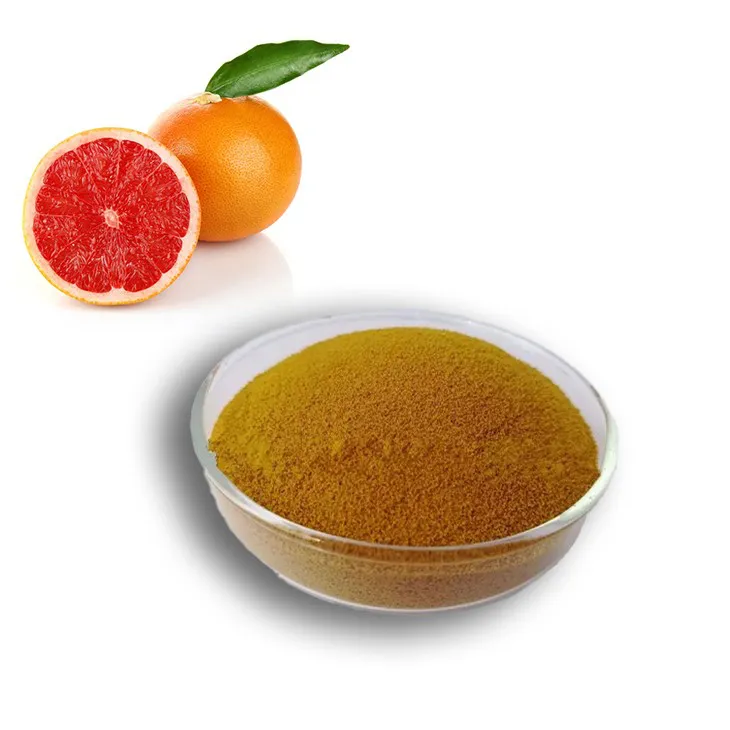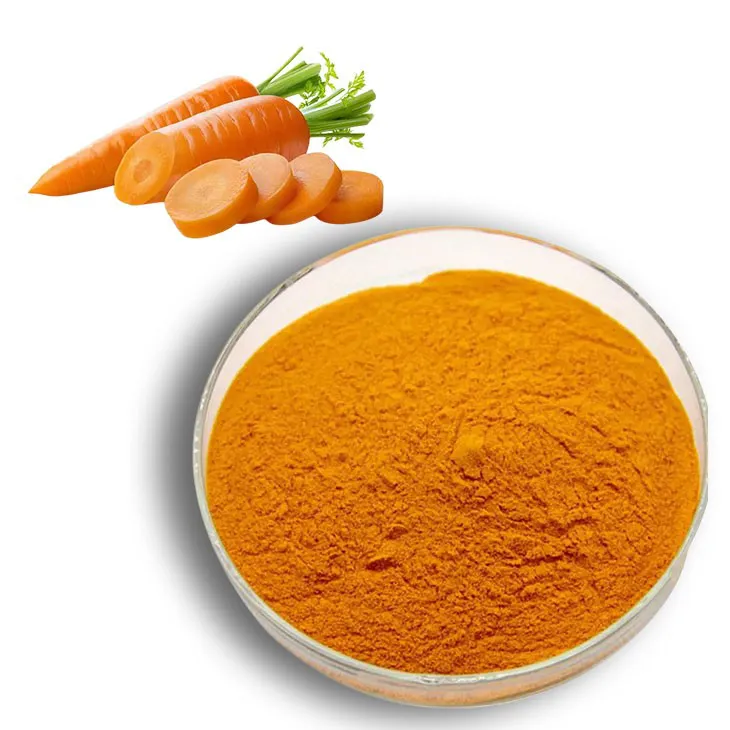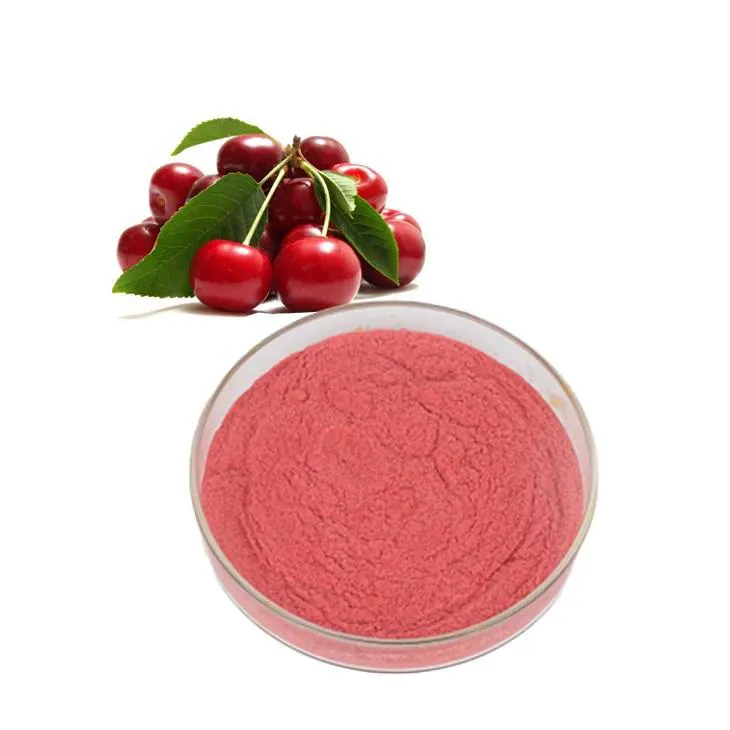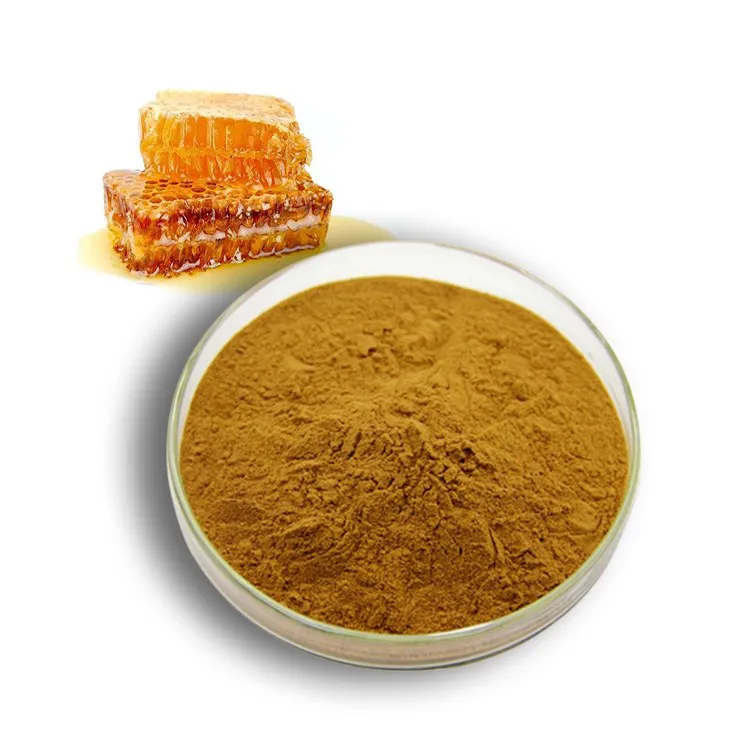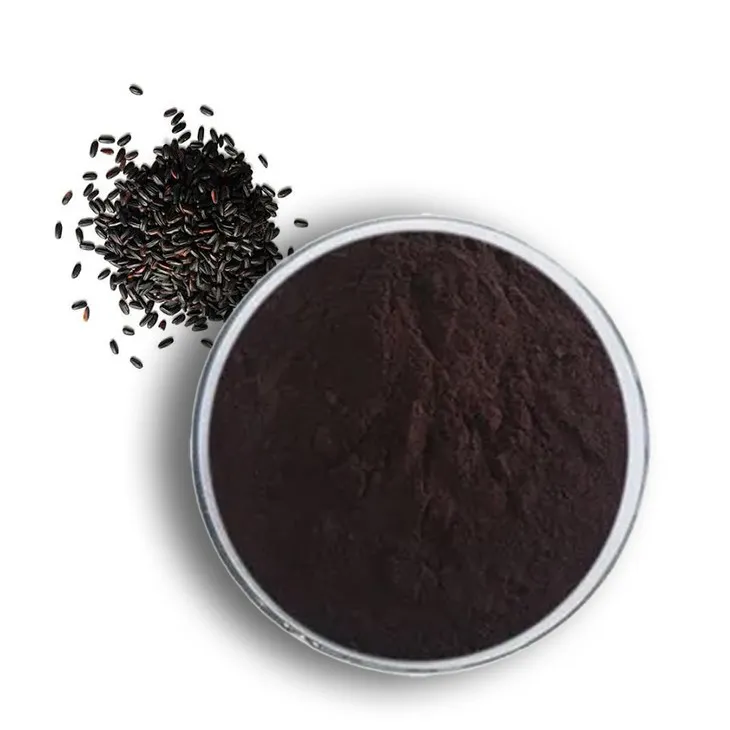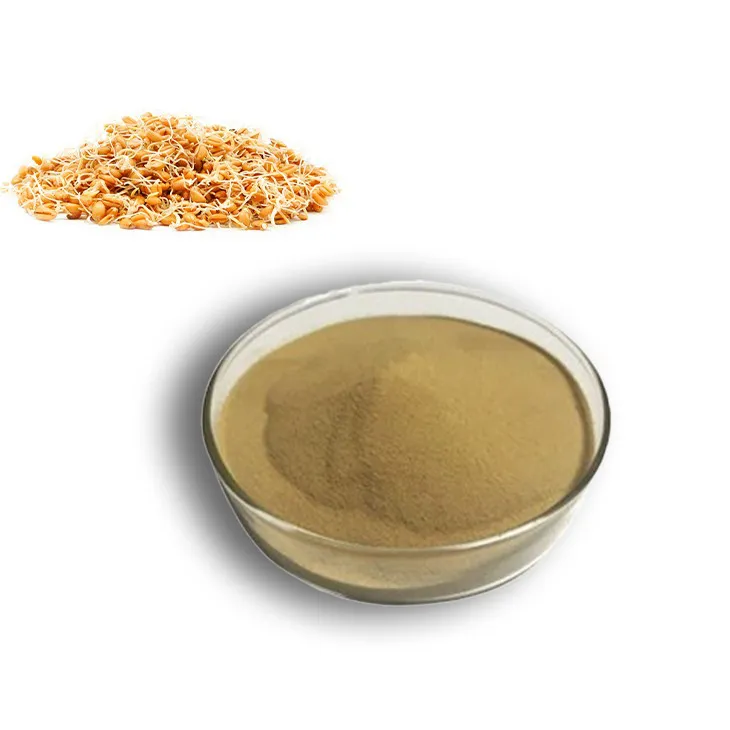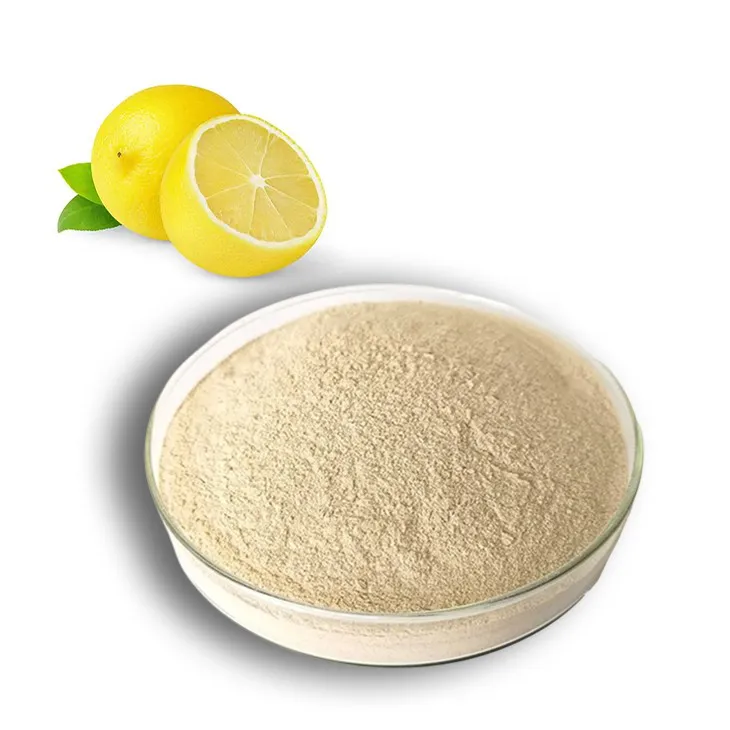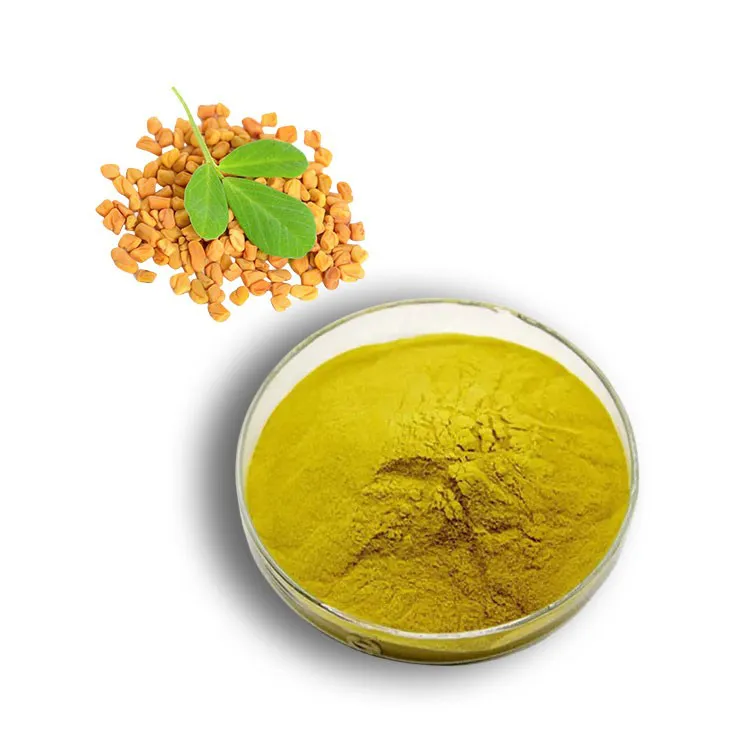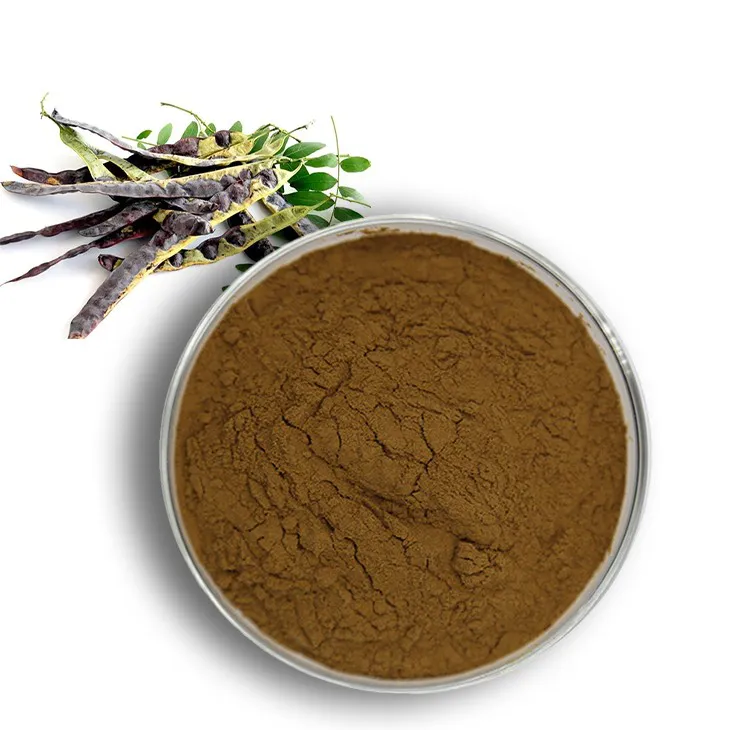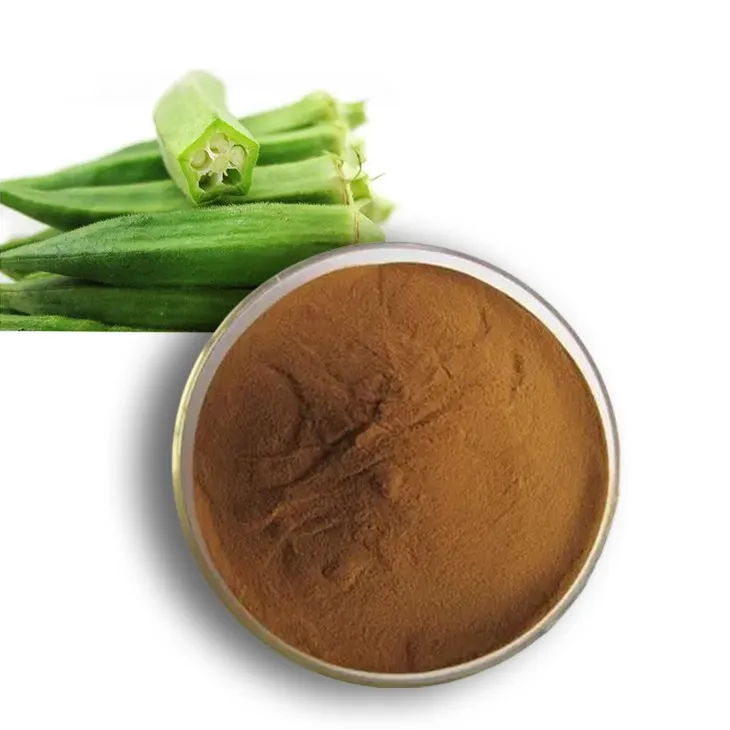- 0086-571-85302990
- sales@greenskybio.com
antimicrobial activity of plant extracts
2023-09-27
1. Historical Background of Antimicrobial Use in Plants
1. Historical Background of Antimicrobial Use in Plants
The use of plants for their antimicrobial properties dates back to ancient civilizations, where traditional medicine relied heavily on the natural world for remedies. The historical background of antimicrobial use in plants is a rich tapestry woven with the knowledge and practices of various cultures across the globe.
Ancient Civilizations
Early evidence of plant-based antimicrobial treatments can be traced back to the Sumerians and Egyptians, who documented the use of herbs for medicinal purposes around 2000 BCE. The Ebers Papyrus, an Egyptian medical document, contains numerous prescriptions for treating infections with plant extracts.
Greek and Roman Influence
The Greeks, particularly Hippocrates, the "Father of Medicine," further expanded on the use of plants for medicinal purposes. The Romans, influenced by Greek medicine, also contributed to the development of botanical treatments, with Pliny the Elder documenting hundreds of plant-based remedies in his writings.
Traditional Chinese Medicine
In China, the use of plants for antimicrobial purposes is deeply rooted in Traditional Chinese Medicine (TCM), which has been practiced for thousands of years. TCM practitioners have long used herbs such as ginseng, astragalus, and licorice, which are believed to possess antimicrobial properties.
Ayurveda in India
Similarly, in India, the ancient system of medicine known as Ayurveda has utilized plants for their antimicrobial properties. Herbs like turmeric, neem, and holy basil (tulsi) have been used for centuries to treat infections and promote overall health.
European Folklore and Practices
In Europe, the Middle Ages saw the continuation of plant-based treatments, with many remedies passed down through generations and documented in various herbals. These practices were often based on folklore and empirical observations of plant effects.
Modern Era and Scientific Discovery
The modern era of antimicrobial plant use began with the discovery of penicillin from the Penicillium mold by Alexander Fleming in 1928. This marked a significant shift towards understanding the scientific basis of antimicrobial activity in natural substances. Since then, numerous plant-derived antimicrobial compounds have been isolated and studied.
Ethnobotany and Indigenous Knowledge
The study of traditional uses of plants, known as ethnobotany, has provided valuable insights into the potential antimicrobial properties of various plant species. Indigenous communities around the world have preserved a wealth of knowledge about the medicinal properties of plants, which is being increasingly recognized and integrated into modern research.
Conclusion of Historical Background
The historical background of antimicrobial use in plants is a testament to the enduring wisdom of traditional medicine and the continuous quest for effective treatments. As we delve deeper into the study of plant extracts, we find ourselves standing on the shoulders of giants, building upon millennia of accumulated knowledge.
2. Types of Plant Extracts with Antimicrobial Properties
2. Types of Plant Extracts with Antimicrobial Properties
Plants have been a rich source of natural compounds with antimicrobial properties for centuries. These extracts can be derived from various parts of the plant, such as leaves, roots, seeds, and flowers. The diversity of plant species and their bioactive compounds contribute to the wide range of antimicrobial activities observed. Here, we discuss some of the most common types of plant extracts with antimicrobial properties:
A. Essential Oils
Essential oils are concentrated volatile compounds found in various aromatic plants. They are known for their broad-spectrum antimicrobial activity and are commonly derived from plants like lavender, tea tree, and oregano. The antimicrobial action of essential oils is attributed to their complex mixture of bioactive compounds, such as terpenes and phenols.
B. Alkaloids
Alkaloids are a group of naturally occurring organic compounds that mostly contain basic nitrogen atoms. They are derived from a variety of plant sources and have diverse antimicrobial properties. Examples include quinine from the cinchona tree, which is effective against malaria, and berberine from the goldenseal plant, which exhibits activity against a range of bacteria and fungi.
C. Polyphenols
Polyphenols are a large class of compounds characterized by the presence of multiple phenol units. They are abundant in plant extracts and have been shown to possess antimicrobial properties. Tannins, flavonoids, and lignans are types of polyphenols that are commonly found in plants like grapes, green tea, and flaxseed.
D. Flavonoids
Flavonoids are a subclass of polyphenols known for their diverse biological activities, including antimicrobial effects. They can be found in a wide range of plants, including fruits, vegetables, and herbs. The presence of flavonoids in plant extracts contributes to their ability to inhibit microbial growth and reduce inflammation.
E. Tannins
Tannins are a group of naturally occurring polyphenolic compounds that are known for their astringent properties. They are commonly found in plants such as oak, tea, and witch hazel. Tannins have antimicrobial properties due to their ability to bind to proteins and disrupt the structure and function of microbial cells.
F. Saponins
Saponins are a class of steroid or triterpenoid glycosides that produce soap-like foam when agitated in water. They are found in a variety of plants, including soybeans, quinoa, and ginseng. Saponins have been reported to exhibit antimicrobial activity by disrupting the cell membranes of microorganisms.
G. Glycosides
Glycosides are compounds that consist of a sugar molecule attached to a non-sugar molecule (aglycone). They are found in many plants and can have antimicrobial properties. For example, digitoxin, a cardiac glycoside found in the foxglove plant, has been used for its antimicrobial and therapeutic effects.
H. Terpenes
Terpenes are a large and diverse class of organic compounds that are the main components of the essential oils of many types of plants. They are known for their antimicrobial properties and can be found in plants like eucalyptus, mint, and lemon.
I. Quinones
Quinones are organic compounds with a specific chemical structure that includes a six-carbon ring with two ketone groups. They are found in plants such as St. John's wort and have antimicrobial activity due to their ability to generate reactive oxygen species, which can damage microbial cells.
J. Lactones
Lactones are cyclic esters formed by the esterification of a hydroxyl group of a carboxylic acid with a hydroxyl group in the same molecule. They are found in plants like wormwood and have been reported to have antimicrobial properties.
The antimicrobial properties of these plant extracts are attributed to their ability to target various cellular components of microorganisms, such as cell walls, cell membranes, and proteins, leading to the inhibition of microbial growth and survival. The diversity of these compounds and their mechanisms of action make plant extracts a promising resource for the development of new antimicrobial agents.
3. Mechanisms of Antimicrobial Action
3. Mechanisms of Antimicrobial Action
The antimicrobial activity of plant extracts is a complex phenomenon that involves various mechanisms by which these natural substances can inhibit or kill microorganisms. Understanding these mechanisms is crucial for the development of effective plant-based antimicrobial agents. Here are some of the key mechanisms through which plant extracts exert their antimicrobial effects:
3.1 Disruption of Cell Membrane Integrity
One of the primary ways plant extracts combat microbes is by disrupting the integrity of their cell membranes. Many plant compounds, such as terpenes and phenolic acids, can penetrate the lipid bilayer of bacterial membranes, causing leakage of cellular contents and ultimately leading to cell death.
3.2 Inhibition of Protein Synthesis
Plant extracts may also inhibit protein synthesis in microorganisms. Some compounds can bind to ribosomes, preventing the translation of mRNA into proteins, which are essential for the growth and survival of the microbe.
3.3 Interference with Metabolic Pathways
The antimicrobial activity of plant extracts can be attributed to their ability to interfere with the metabolic pathways of microorganisms. By inhibiting key enzymes or disrupting the synthesis of essential metabolites, plant extracts can effectively halt the growth and reproduction of microbes.
3.4 Oxidative Stress Induction
Some plant extracts have the capacity to induce oxidative stress in microbial cells. They can generate reactive oxygen species (ROS), which can damage cellular components, including proteins, lipids, and DNA, leading to microbial death.
3.5 Inhibition of Nucleic Acid Synthesis
Plant extracts can also inhibit the synthesis of nucleic acids, such as DNA and RNA, which are vital for the replication and transcription processes in microbes. This can lead to a cessation of microbial growth and reproduction.
3.6 Biofilm Inhibition
Biofilms are complex communities of microorganisms that are often resistant to conventional antimicrobial treatments. Some plant extracts have been found to inhibit biofilm formation or disrupt existing biofilms, making them more susceptible to antimicrobial agents.
3.7 Synergistic Effects
In many cases, the antimicrobial activity of plant extracts is not due to a single compound but rather the result of synergistic interactions among multiple compounds. These synergistic effects can enhance the overall antimicrobial potency of the plant extracts.
3.8 Targeting Quorum Sensing
Quorum sensing is a communication mechanism used by bacteria to coordinate their behavior based on population density. Some plant extracts can interfere with quorum sensing, disrupting the coordinated behavior of bacteria and reducing their virulence.
Understanding these mechanisms is essential for the development of novel antimicrobial agents from plant extracts. By targeting specific microbial processes or structures, plant-based antimicrobials can offer a promising alternative to conventional antibiotics, especially in the face of increasing antibiotic resistance.
4. Extraction Techniques for Plant Extracts
4. Extraction Techniques for Plant Extracts
The extraction of bioactive compounds from plant materials is a critical step in the study of their antimicrobial properties. Various techniques have been developed and employed over the years to effectively isolate these compounds. Here, we discuss some of the most common extraction methods used in the preparation of antimicrobial plant extracts.
4.1 Solvent Extraction
Solvent extraction is one of the oldest and most widely used methods for extracting bioactive compounds from plants. It involves the use of solvents such as water, ethanol, methanol, or acetone to dissolve the compounds of interest. The choice of solvent depends on the polarity of the target compounds. The plant material is typically soaked in the solvent, and the mixture is then agitated or heated to facilitate the extraction process.
4.2 Maceration
Maceration is a simple and traditional method of extraction that involves soaking plant material in a solvent for an extended period. This method allows for the slow diffusion of the bioactive compounds into the solvent, which is then separated from the plant material by filtration.
4.3 Soxhlet Extraction
The Soxhlet apparatus is a more sophisticated version of the maceration process. It uses a continuous extraction cycle where the solvent is heated, passed through the plant material, and then condensed back into the solvent reservoir. This process is repeated multiple times to ensure thorough extraction.
4.4 Ultrasound-Assisted Extraction (UAE)
Ultrasound-assisted extraction uses ultrasonic waves to disrupt plant cell walls, thereby increasing the efficiency of the extraction process. This method is known for its speed, reduced solvent usage, and the preservation of heat-sensitive compounds.
4.5 Supercritical Fluid Extraction (SFE)
Supercritical fluid extraction utilizes supercritical fluids, typically carbon dioxide, which has properties between those of a liquid and a gas. The supercritical fluid can penetrate plant material efficiently and selectively extract compounds without the need for high temperatures.
4.6 Microwave-Assisted Extraction (MAE)
Microwave-assisted extraction uses microwave energy to heat the solvent and plant material, accelerating the extraction process. This method is advantageous due to its speed and the ability to extract a wide range of compounds.
4.7 Cold Pressing and Distillation
For certain volatile compounds, such as essential oils, cold pressing and distillation are preferred methods. Cold pressing involves mechanically extracting the oil from the plant material without the use of heat, while distillation involves the evaporation and subsequent condensation of the volatile compounds.
4.8 Enzymatic Hydrolysis
Enzymatic hydrolysis uses enzymes to break down complex plant structures, releasing bioactive compounds that may be otherwise difficult to extract. This method is particularly useful for obtaining compounds from plant cell walls or other complex matrices.
4.9 Emerging Techniques
With advancements in technology, new extraction techniques are continually being developed. These include pressurized liquid extraction, accelerated solvent extraction, and membrane-assisted extraction, each offering unique advantages in terms of efficiency, selectivity, and environmental impact.
The choice of extraction technique is crucial as it can significantly influence the yield, purity, and biological activity of the extracted compounds. Researchers must consider factors such as the nature of the plant material, the target compounds, and the intended application when selecting an extraction method.
5. In vitro and In vivo Testing of Plant Extracts
5. In vitro and In vivo Testing of Plant Extracts
In vitro and in vivo testing are pivotal in evaluating the antimicrobial efficacy of plant extracts. These tests help determine the potency, safety, and potential applications of plant-derived antimicrobial agents.
In vitro Testing:
In vitro testing is conducted outside of a living organism, typically using laboratory cultures of bacteria, fungi, viruses, or other microorganisms. The main objectives of in vitro testing are:
1. Susceptibility Testing: Determining the minimum inhibitory concentration (MIC) of the plant extract required to inhibit the growth of microorganisms. This is a standard procedure to assess the antimicrobial activity of new compounds.
2. Time-Kill Studies: Observing the time-dependent killing effect of the plant extract on microorganisms, which can provide insights into its mode of action.
3. Bacterial Membrane Integrity: Evaluating the impact of plant extracts on the integrity of bacterial cell membranes using techniques like flow cytometry or electron microscopy.
4. Synergistic Effects: Investigating the potential for plant extracts to enhance the activity of conventional antibiotics, which can be crucial for combating antibiotic resistance.
In vivo Testing:
In vivo testing involves the use of living organisms, such as animals, to study the effects of plant extracts. This type of testing is essential for understanding the bioavailability, pharmacokinetics, and overall safety of plant extracts in a biological context. Key aspects of in vivo testing include:
1. Animal Models: Employing animal models to simulate human diseases and to evaluate the therapeutic effects of plant extracts. Common models include mice, rats, and rabbits.
2. Pharmacokinetics: Studying how plant extracts are absorbed, distributed, metabolized, and excreted by the body, which is crucial for determining dosage and frequency of administration.
3. Toxicity Studies: Assessing the potential toxic effects of plant extracts on living organisms, which is vital for ensuring the safety of these compounds for human use.
4. Immunomodulatory Effects: Investigating how plant extracts may modulate the immune response, which can be beneficial in treating infections and inflammatory conditions.
Challenges in Testing:
Both in vitro and in vivo testing have their respective challenges:
1. Relevance to Human Disease: Ensuring that the results from in vitro and in vivo studies are applicable to human diseases and conditions.
2. Standardization: Developing standardized methods for testing plant extracts to ensure consistency and reproducibility of results.
3. Complexity of Plant Extracts: Managing the complexity of plant extracts, which often contain multiple bioactive compounds that may have synergistic or antagonistic effects.
4. Ethical Considerations: Addressing ethical concerns related to the use of animals in in vivo testing.
Conclusion:
In vitro and in vivo testing are critical steps in the development of plant extracts as antimicrobial agents. They provide valuable information on the efficacy, safety, and potential clinical applications of these natural products. However, it is essential to address the challenges associated with these testing methods to ensure the reliability and relevance of the findings.
6. Applications in Medicine and Agriculture
6. Applications in Medicine and Agriculture
The antimicrobial properties of plant extracts have found numerous applications across various fields, particularly in medicine and agriculture. These applications are driven by the need for sustainable and eco-friendly alternatives to conventional antimicrobial agents, which are often associated with issues such as resistance and environmental impact.
Medicine
In the medical field, plant extracts have been utilized for centuries to combat various infections and diseases. With the rise of antibiotic-resistant bacteria, there is a renewed interest in exploring the potential of these natural resources. Some of the key applications in medicine include:
1. Antibacterial Agents: Plant extracts are being studied for their potential to treat bacterial infections, particularly those resistant to conventional antibiotics. They can be used as standalone treatments or as adjuvants to enhance the effectiveness of existing antibiotics.
2. Antifungal Treatments: Fungal infections, such as candidiasis and aspergillosis, are also a significant concern, especially in immunocompromised individuals. Plant extracts with antifungal properties are being investigated for their therapeutic potential.
3. Antiviral Agents: The emergence of viral diseases, including influenza and COVID-19, has highlighted the need for effective antiviral treatments. Plant extracts are being explored for their ability to inhibit viral replication and reduce the severity of infections.
4. Antiparasitic Medications: Parasitic diseases, such as malaria, leishmaniasis, and trypanosomiasis, continue to be a global health challenge. Plant extracts are being researched for their potential to target and eliminate parasites.
5. Wound Healing and Tissue Repair: Some plant extracts have been found to promote wound healing and tissue regeneration, making them valuable in the treatment of burns, ulcers, and other skin injuries.
Agriculture
In agriculture, plant extracts are being increasingly recognized for their potential to improve crop yield and protect against pests and diseases. The applications in agriculture include:
1. Pest Control: Plant extracts can act as natural pesticides, providing an alternative to synthetic chemicals. They can deter or kill pests such as insects, nematodes, and mites, thereby reducing crop damage.
2. Disease Resistance: Some plant extracts can enhance the natural resistance of crops to diseases caused by fungi, bacteria, and viruses. This can lead to healthier plants and increased yields.
3. Growth Promoters: Certain plant extracts have been shown to stimulate plant growth and development, potentially increasing crop productivity.
4. Post-Harvest Protection: To extend the shelf life of harvested produce, plant extracts can be used to prevent spoilage and decay caused by microorganisms.
5. Sustainable Agriculture: The use of plant extracts in agriculture supports the move towards more sustainable and environmentally friendly farming practices.
The integration of plant extracts into medicine and agriculture offers a promising avenue for addressing the challenges posed by antimicrobial resistance and promoting sustainable practices. However, further research is needed to fully understand the mechanisms of action, optimize extraction techniques, and ensure the safety and efficacy of these natural products.
7. Challenges and Limitations
7. Challenges and Limitations
The utilization of plant extracts for antimicrobial purposes, despite its numerous benefits, is not without challenges and limitations. These include:
1. Standardization and Quality Control: One of the major challenges is the standardization of plant extracts. The chemical composition of plant extracts can vary widely due to factors such as the plant's age, growing conditions, and the time of harvest. This variability can affect the consistency and reliability of the antimicrobial activity.
2. Bioavailability and Stability: Plant extracts may have poor bioavailability due to rapid metabolism or degradation in the body. Additionally, the stability of the active compounds can be affected by environmental factors such as heat, light, and moisture.
3. Toxicity and Side Effects: While many plant extracts are considered safe, some may contain toxic compounds that can cause adverse effects. The potential for toxicity and side effects must be thoroughly investigated before widespread use.
4. Resistance Development: Just like with synthetic antimicrobials, there is a risk that microorganisms may develop resistance to plant-derived antimicrobials, which could limit their long-term effectiveness.
5. Scalability and Cost: The extraction process from plants can be labor-intensive and costly, especially for large-scale production. This can make plant extracts less competitive compared to synthetic antimicrobials in terms of cost.
6. Regulatory Approval: The regulatory approval process for plant extracts can be complex and time-consuming. There are often stringent requirements for safety and efficacy data that must be met before a product can be marketed.
7. Ecological Impact: Overharvesting of plants for their antimicrobial properties can have negative ecological consequences, including the depletion of natural resources and disruption of ecosystems.
8. Intellectual Property Issues: There can be challenges related to intellectual property rights, especially with traditional medicinal plants, which are often used by indigenous communities without formal recognition of their rights.
9. Lack of Comprehensive Research: While there is a wealth of anecdotal evidence and some scientific studies on the antimicrobial properties of plant extracts, more comprehensive research is needed to fully understand their mechanisms of action, optimal use, and potential interactions with other substances.
10. Public Perception and Acceptance: There may be a lack of public awareness or acceptance of plant-based antimicrobials, particularly if they are perceived as less effective or more variable than conventional treatments.
Addressing these challenges requires a multidisciplinary approach, involving chemists, biologists, pharmacologists, ecologists, and social scientists, among others. Continued research and development, along with effective communication and education, are essential to overcome these limitations and harness the full potential of plant extracts in antimicrobial applications.
8. Future Perspectives and Research Directions
8. Future Perspectives and Research Directions
As the field of antimicrobial research continues to evolve, the exploration of plant extracts as a source of novel antimicrobial agents remains a promising avenue. Future perspectives and research directions in this domain encompass several key areas:
8.1 Enhancing Extraction Techniques
Improving the efficiency and selectivity of extraction methods is crucial for obtaining more potent and pure plant extracts. Research into advanced technologies such as ultrasound-assisted extraction, microwave-assisted extraction, and supercritical fluid extraction could yield more effective antimicrobial compounds with fewer impurities.
8.2 Expanding the Range of Plant Species
Currently, only a fraction of known plant species have been thoroughly investigated for their antimicrobial properties. Future research should aim to explore a broader range of plants, especially those from less-studied ecosystems, to discover new antimicrobial compounds.
8.3 Understanding Molecular Mechanisms
A deeper understanding of the molecular mechanisms by which plant extracts exert their antimicrobial effects is essential. This includes studying the interactions between plant compounds and microbial cell structures, as well as the genes and proteins involved in these processes.
8.4 Synergistic Effects and Combination Therapies
Investigating the potential synergistic effects of combining plant extracts with conventional antibiotics or other antimicrobial agents could lead to more effective treatment strategies. This approach may help overcome resistance and reduce the effective dosage of antibiotics required.
8.5 Nanotechnology Integration
Incorporating nanotechnology into the delivery systems of plant extracts may enhance their bioavailability, stability, and targeted delivery to specific sites of infection. This could improve the therapeutic efficacy of plant-based antimicrobials.
8.6 Clinical Trials and Regulatory Approvals
To transition from laboratory findings to clinical applications, rigorous clinical trials are necessary to establish the safety, efficacy, and optimal dosing of plant-based antimicrobials. This will also involve working closely with regulatory bodies to meet the required standards for approval.
8.7 Sustainable and Eco-friendly Production
Ensuring the sustainable production of plant extracts is vital to minimize environmental impact. Research should focus on developing eco-friendly cultivation practices, reducing waste during extraction, and exploring renewable sources of raw materials.
8.8 Public Awareness and Education
Raising public awareness about the benefits of plant-based antimicrobials and their role in combating antibiotic resistance is crucial. Educational campaigns can help inform consumers and healthcare professionals about the importance of natural alternatives.
8.9 Addressing Resistance and Adaptation
Research into how microbes adapt and develop resistance to plant extracts is essential to anticipate and mitigate potential resistance mechanisms. This knowledge can guide the development of strategies to prolong the effectiveness of these natural antimicrobials.
8.10 Interdisciplinary Collaboration
Encouraging collaboration between biologists, chemists, pharmacologists, and other relevant disciplines can foster innovative approaches to antimicrobial research. Such interdisciplinary efforts can lead to breakthroughs in understanding and utilizing plant extracts for antimicrobial purposes.
By pursuing these research directions, the scientific community can harness the full potential of plant extracts in the ongoing battle against infectious diseases and antibiotic resistance.
9. Conclusion
9. Conclusion
In conclusion, the antimicrobial activity of plant extracts has garnered significant attention due to their potential as natural alternatives to conventional antibiotics and antifungal agents. The historical use of plants for medicinal purposes has paved the way for modern research into their antimicrobial properties, revealing a diverse array of plant-derived compounds with broad-spectrum activity against various pathogens.
The types of plant extracts with antimicrobial properties are numerous, encompassing a wide range of plant families and species. These extracts contain bioactive compounds such as alkaloids, flavonoids, terpenoids, and phenolic compounds, which exhibit varying mechanisms of action, including disruption of cell membranes, inhibition of protein synthesis, and interference with metabolic pathways.
Extraction techniques for plant extracts are crucial for obtaining bioactive compounds in a concentrated form. Various methods, including solvent extraction, steam distillation, and cold pressing, have been employed to maximize the yield and potency of these extracts.
In vitro and in vivo testing of plant extracts provide valuable insights into their efficacy and safety. These tests help to identify the most promising candidates for further development and application in medicine and agriculture. The use of plant extracts in medicine has shown promise in the treatment of various infections, while their application in agriculture can help to reduce the reliance on synthetic chemicals and promote sustainable practices.
However, challenges and limitations remain in the development and application of plant extracts as antimicrobial agents. These include issues related to standardization, bioavailability, and potential toxicity. Additionally, the emergence of drug-resistant pathogens highlights the need for continuous research and development of new antimicrobial agents.
Looking to the future, research directions should focus on the identification of novel bioactive compounds, optimization of extraction techniques, and the development of synergistic combinations with existing antimicrobial agents. Furthermore, interdisciplinary collaboration between chemists, biologists, and pharmacologists will be essential to advance our understanding of the complex interactions between plant extracts and microbial pathogens.
In summary, the antimicrobial activity of plant extracts offers a promising avenue for the development of new therapeutic agents and sustainable agricultural practices. By harnessing the power of nature and combining it with modern scientific techniques, we can work towards a future where the threat of antimicrobial resistance is effectively managed and mitigated.
- ▶ Hesperidin
- ▶ Citrus Bioflavonoids
- ▶ Plant Extract
- ▶ lycopene
- ▶ Diosmin
- ▶ Grape seed extract
- ▶ Sea buckthorn Juice Powder
- ▶ Fruit Juice Powder
- ▶ Hops Extract
- ▶ Artichoke Extract
- ▶ Mushroom extract
- ▶ Astaxanthin
- ▶ Green Tea Extract
- ▶ Curcumin
- ▶ Horse Chestnut Extract
- ▶ Other Product
- ▶ Boswellia Serrata Extract
- ▶ Resveratrol
- ▶ Marigold Extract
- ▶ Grape Leaf Extract
- ▶ New Product
- ▶ Aminolevulinic acid
- ▶ Cranberry Extract
- ▶ Red Yeast Rice
- ▶ Red Wine Extract
-
Grapefruit Seed Extract Powder
2023-09-27
-
Beta Carotene
2023-09-27
-
Acerola Juice Powder
2023-09-27
-
Propolis Extract Powder
2023-09-27
-
Black Rice Extract
2023-09-27
-
Wheat Germ Extract
2023-09-27
-
Lemon Extract
2023-09-27
-
Fenugreek Extract Powder
2023-09-27
-
Saponin Extract
2023-09-27
-
Okra Extract
2023-09-27











